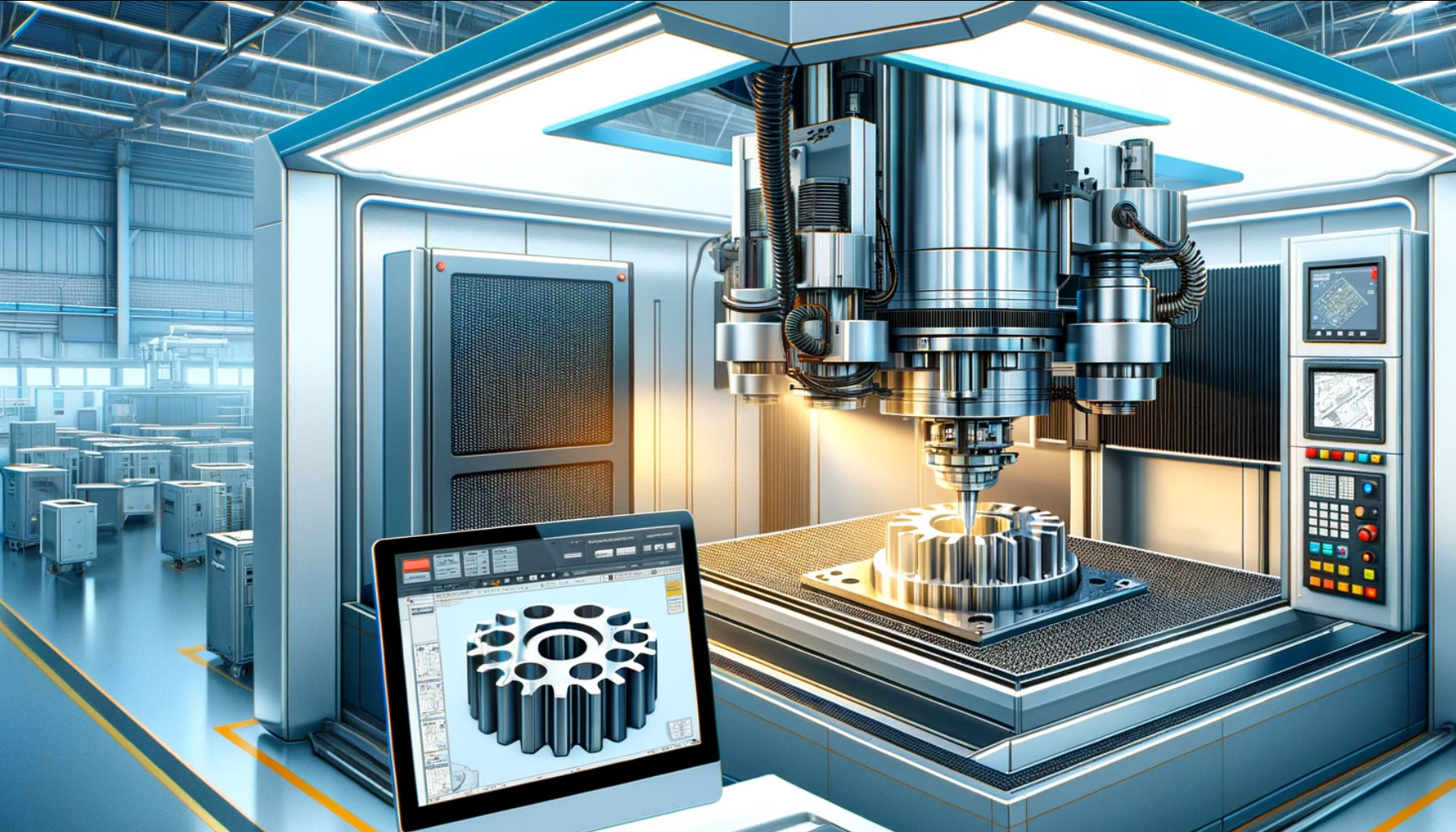
A Professional’s Guide to Injection Molding Materials
Injection molding is a versatile manufacturing process used to create a variety of parts and products. The choice of material significantly impacts the properties and suitability of the final product. This comprehensive guide explores the top 10 materials and plastics used in injection molding, discussing their characteristics, applications, and why they are favored in the industry.
By understanding the unique properties and advantages of each material, manufacturers and designers can make informed decisions to ensure the functionality, durability, and quality of their injection-molded products. As technology continues to advance, we can expect further developments in materials, expanding the possibilities of what can be achieved through injection molding.
1. Polyethylene (PE)
Polyethylene is the most common plastic in the world. It’s known for its durability, flexibility, and resistance to moisture. It comes in various densities, with high-density polyethylene (HDPE) being used for rigid products like containers and low-density polyethylene (LDPE) for softer products like plastic bags. With its exceptional performance and cost-effectiveness, polyethylene continues to play a crucial role in countless industries, from packaging and construction to automotive and healthcare.
2. Polypropylene (PP)
Polypropylene is a thermoplastic polymer that’s tough and resistant to chemicals. It has a high melting point, making it suitable for items that need to withstand heat, such as dishwasher-safe containers. PP is also used in automotive parts, medical devices, and textiles. With its remarkable properties and broad range of applications, polypropylene continues to be a preferred choice in numerous industries.
3. Polystyrene (PS)
Polystyrene is a versatile plastic that can be solid or foamed. General-purpose polystyrene is clear, hard, and brittle. It’s commonly used for products like plastic cutlery, CD cases, and laboratory ware. Expanded polystyrene is used for cushioning and insulation. Polystyrene’s ability to provide lightweight yet resilient solutions in various industries has solidified its position as a highly valued material in the world of injection molding.
4. Acrylonitrile Butadiene Styrene (ABS)
ABS is a terpolymer made by polymerizing styrene and acrylonitrile with polybutadiene. It’s known for its toughness and impact resistance, making it ideal for protective gear, automotive parts, and toys like LEGO bricks. Furthermore, ABS’s ability to withstand rigorous conditions makes it an ideal material for automotive components, as it can withstand vibrations and impacts commonly experienced on the road. With its impressive mechanical properties and versatile nature, ABS continues to cement its position as a reliable and widely used material in the field of injection molding.
5. Polyamide (Nylon)
Polyamide, commonly known as nylon, is a synthetic thermoplastic linear polyamide renowned for its exceptional mechanical properties and versatility. Nylon stands out for its remarkable strength, excellent temperature resistance, and long-lasting durability. These attributes make it highly desirable for a wide range of applications across industries. In the automotive sector, nylon finds extensive use in components like engine covers, connectors, and fuel system parts due to its high strength and heat resistance. The consumer electronics industry harnesses nylon’s electrical insulating properties and dimensional stability in the production of connectors, housings, and circuit boards. Additionally, nylon’s excellent abrasion resistance and moisture absorption characteristics make it a sought-after choice in the textile industry for manufacturing fabric, ropes, and other durable materials. The broad spectrum of applications where nylon excels is a testament to its exceptional performance and adaptability in the field of injection molding.
6. Polycarbonate (PC)
Polycarbonate, a formidable thermoplastic, boasts remarkable toughness, outstanding impact resistance, and exceptional clarity. These properties make it a highly sought-after material in various industries. One notable application is in the production of bulletproof glass, where the combination of polycarbonate’s strength and transparency provides reliable protection against ballistic threats. Furthermore, the optical clarity and shatter-resistant nature of polycarbonate make it an ideal choice for eyewear lenses, ensuring both visual acuity and safety. The electronic industry also benefits from the use of polycarbonate in manufacturing components like display screens, covers, and electrical enclosures, due to its excellent electrical insulation and resistance to heat and flame. Moreover, polycarbonate can be blended with ABS to create a composite material that exhibits enhanced strength and improved resistance to elevated temperatures, broadening its range of feasible applications. The versatility and exceptional performance of polycarbonate have established it as a critical material in the field of injection molding.
7. Polyoxymethylene (POM)
Also known as acetal or by its trade name Delrin, POM is known for its stiffness, dimensional stability, and resistance to wear. These key attributes make POM a preferred choice when it comes to precision parts in various industries. Mechanical gears, for instance, benefit from the high stiffness and low friction properties of POM, ensuring smooth and efficient power transmission in machinery and equipment. Ski bindings also utilize POM for its dimensional stability, enabling reliable and precise performance in challenging winter conditions. In the realm of electrical engineering, POM finds application in components such as connectors and insulators, thanks to its excellent electrical properties and resistance to thermal deformation. The synergy of these properties positions POM as a reliable material for injection molding, allowing the creation of intricate and durable parts for a wide array of industries. It’s often used for precision parts in mechanical gears, ski bindings, and electrical engineering components.
8. Thermoplastic Rubber (TPR)
Thermoplastic Rubber (TPR) is a versatile material that combines the desirable characteristics of rubber with the recyclability and processability of plastics. TPR is widely utilized in applications where flexibility, durability, and resilience are crucial factors. One notable application is in weather seals, where TPR provides excellent sealing properties to prevent air and water leakage, making it ideal for use in windows, doors, and automotive weatherstripping. TPR’s inherent flexibility and shock-absorbing abilities also make it a preferred material for footwear manufacturing, where it enhances comfort and provides slip resistance. Moreover, TPR’s biocompatibility and resistance to chemicals make it suitable for various medical devices, such as catheters, breathing masks, and grips for surgical instruments. The unique combination of rubber-like qualities and the processability of plastics makes TPR an excellent choice for injection molding in industries that require flexible and reliable materials.
9. Thermoplastic Polyurethane (TPU)
Thermoplastic Polyurethane (TPU) belongs to the class of polyurethane plastics and stands out for its exceptional versatility and wide range of properties. TPU offers a unique combination of elasticity, transparency, and resistance to oil and grease, making it highly valuable in various industries. One notable application of TPU is in the manufacturing of phone cases, where its flexibility and shock-absorbing capabilities provide reliable protection for electronic devices. In the medical field, TPU is extensively used in the production of medical devices and equipment, thanks to its biocompatibility and resistance to chemicals and moisture. Additionally, TPU’s excellent layer adhesion and flexibility make it a popular choice as a filament for 3D printing, allowing the creation of intricate and durable objects across a multitude of fields. With its diverse properties and broad range of applications, TPU continues to pave the way for innovative solutions in the realm of injection molding.
10. Polyethylene Terephthalate (PET)
Polyethylene Terephthalate (PET) is a widely recognized clear, strong, and lightweight plastic that finds extensive usage in numerous industries. PET’s exceptional properties make it a popular choice for beverage bottles and food packaging, where its transparency allows for product visibility, while its strength ensures protection and preservation. Beyond packaging, PET is also utilized in the production of synthetic fibers, providing durability and wrinkle resistance in textiles for clothing, carpets, and upholstery. Furthermore, when combined with glass fiber, PET transforms into engineering resins with enhanced mechanical properties, making it suitable for applications in automotive components, electrical housing, and construction materials. This versatility and reliability have solidified PET’s position as a highly regarded material in the field of injection molding, setting the stage for sustainable and functional solutions in diverse industries. PET is a clear, strong, and lightweight plastic often used in beverage bottles and food packaging. It’s also used in synthetic fibers and engineering resins when combined with glass fiber.
Conclusion
In summary, this comprehensive guide explores the top 10 materials used in injection molding. Each material has unique properties that make it suitable for specific applications, and careful consideration of factors such as durability, flexibility, and resistance to heat and chemicals is crucial when selecting a material for injection molding.
By understanding these properties, Injection Molding Manufacturers like LK MOULDS can make informed decisions to ensure the functionality and quality of their products.
As technology advances, we may see the development of new materials that will further expand the possibilities of what can be achieved through injection molding.
Frequently Asked Questions (FAQ) - Injection Molding Material Guide
Discover the answers to common questions about injection molding materials and plastics.
When choosing a material for injection molding, it's essential to consider factors such as the intended use of the product, required durability, flexibility, and resistance to heat and chemicals to ensure optimal functionality and quality.
Some popular materials used in injection molding include polyethylene (PE), polypropylene (PP), polystyrene (PS), acrylonitrile butadiene styrene (ABS), polyamide (nylon), polycarbonate (PC), polyoxymethylene (POM), thermoplastic rubber (TPR), thermoplastic polyurethane (TPU), and polyethylene terephthalate (PET).
These materials find applications across various industries. For example, polyethylene and polypropylene are widely used in packaging and automotive sectors, while polystyrene is utilized in consumer products and insulation. ABS is favored in protective gear and toys. Polyamide is found in automotive, electronics, and textile industries. Polycarbonate is utilized in security and optical applications. POM is popular in precision parts. TPR is commonly found in weather seals, footwear, and medical devices. TPU is used in phone cases, medical devices, and 3D printing. PET is prevalent in beverage bottles, food packaging, and synthetic fibers.
Designing for injection molding requires considering factors like draft angles, wall thickness, gate placement, material shrinkage, and part ejection mechanisms to ensure successful production and functionality of the molded parts.
Injection molding materials, such as PET, can support sustainability initiatives through their recyclability and lightweight properties, reducing environmental impact and resource consumption. Additionally, the longevity and durability of certain materials help create long-lasting products, reducing waste.
Yes, some materials, like PC and ABS, can be blended to improve strength and heat resistance. Additionally, certain materials can be reinforced with additives like glass fiber to enhance mechanical properties.
For more detailed information about injection molding materials and their applications, we would recommend you consult with our team about industry-specific requirements or materials.
Our team is here to answer your questions
Let’s talk about your Project
Relatetd Post
Recent Posts
- CNC Machining: The Key Advantages for Efficient and Precise Rapid Prototyping
- Prototyping: 3D Printing vs. CNC Machining
- Automotive Plastic Injection Molding: A Cost-Effective Solution
- Injection Molding: The Ultimate Manufacturing & Design Guide
- What is CNC Machining? A Comprehensive Overview of Precision Manufacturing







Comments are closed